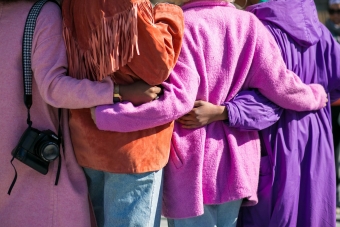Communities and their perspectives
After planning and implementing various communication programmes ranging from women’s rights to issues of disadvantaged groups for several years, I know how important communication programmes are in development. Most importantly, understanding perspectives of communities and the significance that communication has for them is supremely critical. Through my research, I am exploring how integrating key development concepts of community empowerment and participation in theory and practice of public relations and Communication for Development one can transform communication interventions in development.
Questions on the meaning of development for communities and empowerment have been debated in development scholarship for more than three decades. Often donor driven development, such as grant-based and agency funded programmes, have attached expectations to project outcomes. This tension is at odds with community driven development which remains highly contextual and complex in practice.
For example, in a given scenario where development means introducing a new vaccine among communities in developing countries, the scale of the project is usually determined by the state. However, more and more space should be made for communities to choose how programmes are designed and introduced. This increases effectiveness, limits unintended consequences, and can lead to more efficient programming through cohesive, socialised engagement by community. Often, communities are either ignored or overshadowed due to timelines and deliverables in development programming. There have been several instances in the past where development impact has been limited due to a lack of community participation.
Naturally, there is a growing consensus among development scholars that both development planning and programmes have to be rooted in communities, and in some instances community participation is hailed as a lifeline of a development initiative.
What this means for communication practice in development
As researchers, we have to recognise that community participation is vital to research in development. Even though communication programmes are mostly designed by experts, they lose their relevance if they are not vetted by community representatives and workers. I argue that community participation should be integral to any communication initiative in development, including public relations. There is a need to understand that participation in communication in a development scenario has different connotations—in some cases, it means improving the effectiveness of development programmes through community involvement, while in other cases, communication itself is rooted in human struggle, local culture and movements (Gumucio-Dagron and Tufte, 2006; Huesca, 2008; Servaes, 2016). Communication programmes may take all shapes and sizes but what stands true in most development scenarios is that communities are central to such initiatives.
While recognising this key conceptual driver in development, it is critical to study communication in development programmes from a socio-cultural and societal perspective—situating communication programmes in the social reality within which they take place and not limiting them to organisational goals only.
My argument here is that communication programmes have remained managerial for several years, and therefore, it is worthwhile to thoroughly examine societal and critical approaches in the two communication disciplines of Public Relations and Communication for Development (Dutta-Bergman, 2005; Edwards and Hodges, 2011; L’Etang and Pieckza, 2006; Manyozo, 2016; Melkote and Steeves, 2015; Servaes, 2016; Sommerfeldt, 2013; Taylor, 2011) to develop better methodologies that firmly ground communication in development. For example, answering a question on the role of communication in an urban sanitation project that is grounded in empowering impoverished sanitation workers may require reframing some fundamental theoretical approaches in communication—because such sociological questions may demand repositioning communication and public relations in social reality. Interestingly, in moving away from technocratic approaches one embraces critical development communication and public relations scholarship that situate communication in sustainability, culture, social justice, engagement and dialogue in greater depth.
Future pathways
In my research this year, I will investigate those development projects that have a strong element of community participation and find out whether public relations and communication hold different meanings for the project planners and implementers in such contexts. I will interview development and communication planners and workers to understand their views on communication with an aim to identify enablers and barriers to socio-cultural and societal approaches to communication.
I am hoping that such an investigation will open the field of development to newer methodologies, reflecting sensitivity to community voices and participation—and will thereby allow development communicators to clearly define communication problems in relation to development goals including the Sustainable Development Goals and community problems in particular.
Some areas that my research will aim to shed light on include: how development communication illuminates public relations in community contexts; how public relations can contribute to a larger goal of building the agency and/or social capital; newer directions for media relations with an issue-centric community approach; how public relations can be used to amplify community voices—collecting evidences of innovative programmes; and the role of participatory community workshops to identify public relations goals and priorities.
